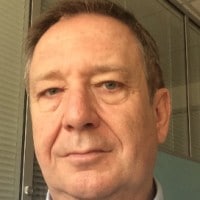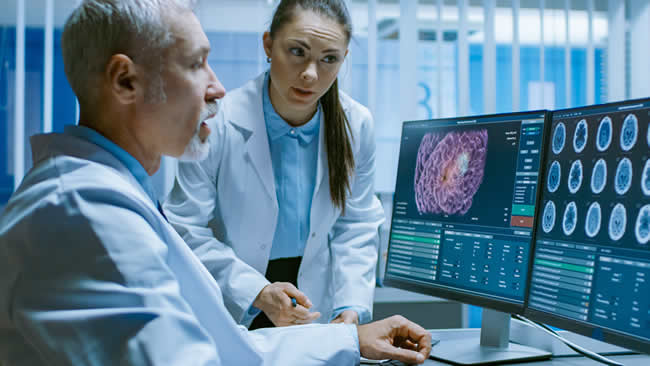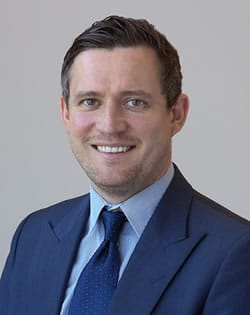With a community of over 100 trained and certified healthcare facility experts Schneider Electric’s EcoXpert healthcare specialization program helps system integrators serve hospitals and other healthcare facilities better. Yves Renaud and Chris Roberts on the program and global evolutions in hospitals, healthcare construction and healthcare facilities.
Healthcare systems across the globe are under pressure. Aging and growing populations, evolving patient expectations, rising costs, more expensive treatments, and the need to adapt to shifting care models as happens in ample countries are a few challenges we’ve previously covered in the scope of digital transformation in healthcare.
The precise nature and order of both the issues at hand and the ways to tackle them differ per region and country. The same applies to healthcare facilities such as hospitals, outpatient centers, and the other critical forms of infrastructure that make the organization of and access to care possible.
Maintaining the cost or reducing costs remains a priority for many hospitals, both public and private. A lot of hospitals today lose money and, even when they make some profit, the operating margin is maximum somewhere around 5%
Just like healthcare systems, healthcare facilities are complex ecosystems with multiple stakeholders and varying priorities depending on numerous factors. By definition, this means that collaboration between different partners is essential. In realizing today’s healthcare facility projects that leverage technologies – such as the Internet of Things (IoT), artificial intelligence (AI), edge computing, and advanced analytics – to deliver upon the goals of the quadruple aim of healthcare, excellent partnerships are equally essential to succeed.
Chris Roberts, the Global Solution Architect for healthcare solutions at Schneider Electric, previously covered these topics in a guest post on the priorities, complexities, challenges, technologies, solutions, and need for strong partnerships in realizing healthcare facility excellence.

Schneider Electric has various technology business partners and a global ecosystem of integrators with deep expertise in healthcare facilities. The latter is developed under the EcoXpert brand, the worldwide channel program of the company. Yves Renaud is globally responsible for the healthcare specialization of EcoXpert. Yves and Chris joined us for an interview on the further development of the program, the differences in healthcare priorities/challenges across the globe, and how the collaboration between partners, as well as their expertise, is continuously strengthened with new initiatives. On the technology partner front, there are also developments, among others, in the field of digital twins and BIM.
Patient satisfaction has a direct financial impact on hospitals
In case you’re new to the EcoXpert program of Schneider Electric: the awarded channel program has several certifications and specializations. Healthcare is one such specialization, and like all others, it requires partners to have a certification or ‘badge’ in one or more of the fields EcoXpert covers. Previously we looked at another specialization: retail facilities. Examples of certifications are critical power, building management systems (BMS), light & room control and substation automation.
Benefits of a partnership approach to healthcare infrastructure expertise
Yves, as Chris described in his guest post, EcoXpert healthcare partners, execute and optimize the healthcare facility projects with intelligent healthcare infrastructure solutions that improve efficiency, safety, and satisfaction with the right information to the right person anytime and anywhere. The EcoStruxure technology plays a central role in that regard as in all EcoXpert badges. Can you start by giving us a practical overview of the specialization and what it teaches and offers partners?
Yves Renaud: Sure. Overall the primary purpose of the healthcare specialization badge and related training program is enabling EcoXperts, today mainly system integrators, to grow their business in the healthcare market.
We start by offering them various tools and essential information on, for instance, the critical challenges in healthcare and our value proposition: the solutions which we provide at Schneider Electric to help them address the challenges for their healthcare clients.

Next, we take a deeper dive into these solutions, which indeed mainly concern our IoT-enabled EcoStruxure platform. The solutions come from the various domains we cover with EcoStruxure: buildings, power, and IT. The training includes all the relevant capabilities they offer from a healthcare facility perspective. As you mentioned, partners who want to specialize in healthcare first need to have a certification. Most of our partners either have a BMS certification or a critical power certification.
Currently, there are more partners with a BMS badge than a critical power certification. One of the reasons is that we see the building management system as the core and the heart of the integration that we want to achieve in the hospital to deliver the value.
Yet, critical power partners are undoubtedly essential and becoming more so as technologies and priorities evolve. In some countries, critical power has always been more vital because of the local situation whereby a priority can be to make sure that the power is and remains on in the hospitals.
The fact that we have both types of experts in practice proves to be a great benefit since more than once, building system integration and critical power partners started collaborating on healthcare projects, again showing the interest of an ecosystem and community of experts.
In 2019, the community for the first time exceeded over 100 trained and certified healthcare experts, and we keep investing time and resources since the EcoXpert partner program remains a critical lever to increase our geographical footprint and activities in the healthcare market for many years to come so we’re happy that the program does well.
The ingredients to help healthcare specialist partners become more efficient
One of the benefits of the badge is that partners can sell more solutions in healthcare and grow their own footprint as trusted advisers in their local healthcare market. EcoXpert is indeed also known for its community strength. In interviews on other specializations, we saw overall benefits such as the possibility for partners to differentiate themselves and future-proof their business in rapidly evolving markets as healthcare certainly is one. Is there anything in particular that stands out as a benefit for systems integrators in the healthcare specialization – and adds to the success of it?
Yves Renaud: The main benefit is that it makes them more efficient in what they do. An essential element in this regard is the fact that we offer them predesigned, pretested, and pre-validated solutions.
Take a solution for an operating theater, for instance. We have specification sheets and different documents that help our healthcare specialist partners take on and deploy projects and solutions in this field without them having to start from scratch. The benefits: time savings, higher efficiency, and lower risks for both them and their clients.
The commercial aspect is also important. The training for the specialization pays quite some attention to this and, for instance, provides insights into how to address and discuss with healthcare management.
We offer our healthcare facility EcoXperts predesigned, pretested, and pre-validated solutions
System integrators, who are experts in the design and implementation of technological solutions that solve business problems, need to work with various stakeholders, including healthcare management. Now, healthcare management doesn’t necessarily want to engage in very technical discussions but wants to know the precise business outcomes of an implementation and what will happen during and after it.
The training helps with these and other questions that are critical for healthcare management and how to answer them, so partners can speak the language of the main stakeholders on a management level and know what is essential.
As Chris reminded in his guest post, healthcare is also a very regulated environment. Is this also the case for healthcare facilities and the ecosystems that build or refurbish them, including EcoXperts, and thus the training?
Yves Renaud: That’s an important point, and the regulatory aspects are indeed tackled in the training. Moreover, it goes further than just knowing the regulations.
First, we help – future – specialist healthcare EcoXperts navigate through the complex landscape of regulations and show how our solutions are compliant with different standards.
Since hospital building projects are often so complicated, EcoXperts with a healthcare specialization can take on many other types of buildings that require the level of expertise they’ve acquired
On top of that, we also help them in providing solutions to healthcare facilities that make the latter compliant. An example is the emergency power system test that exists in the US and several European countries.
It helps the hospitals run an inspection of the whole emergency power supply chain and provides the report that’s requested by certification/accreditation authorities or health authorities that give the hospital the permit to operate. So, putting this in place is an example of an opportunity for EcoXperts that exists because of regulations.
OK. These are quite some capabilities and tools that enable partners to grow their business in the healthcare market, with various elements needed to succeed in that complex ecosystem.
Yves Renaud: There is an essential benefit of the specialization that is related to the complexity of healthcare projects themselves. With all the mentioned benefits and reasons to join the program, the specialization helps partners to be more relevant in the healthcare world and be recognized.
However, since hospital building projects are often so complicated, EcoXperts with a healthcare specialization can take on many other types of buildings that require the level of expertise they’ve acquired. So, it’s easier for them to expand their business even more.
Once you completed hospital projects, you have the knowledge and competency to do projects in other areas for which we offer specialization programs such as hotels and commercial real estate buildings. As you know, we have partners with more than once certification, cross-badging as we call it. Healthcare EcoXpert specialists can positively also differentiate themselves even more by going for more than one specialization.
Healthcare challenges and how healthcare facility projects can help tackle them
Let’s talk about challenges and solutions in healthcare from the facility perspective, as you said, an essential part of the training. Schneider Electric, among others, pays attention to operational efficiencies, enhanced patient well-being, sustainability solutions, and safety management on its website. Yet, what are the main challenges you’ve identified, and can you give some examples of solutions to address them?
The growing and aging of the population
Yves Renaud: We’ve indeed identified several challenges for healthcare facilities. The changing demographic trend and, in particular, the growth and aging of the population creates quite some pressure on hospitals to deal with more patients.
The goal is to find the optimum between where how much is spent on healthcare on the one hand and the life expectancy and wellbeing of the subpopulations on the other
You can imagine the impact of an expected increase in the population by 50% between 2000 and 2050 (from 6 to 9 billion) and the fact that the number of people over 60 years old at the same time will more than double, even almost triple. The probability that older people, unfortunately, need to go to a hospital more often is a fact that can’t be ignored and will increase that pressure.
Maintaining the cost or reducing costs remains a priority for many hospitals, both public and private. We see that a lot of hospitals today lose money and, even when they make some profit, the operating margin is maximum somewhere around 5 percent.
In the US, the share of healthcare costs in the GDP is around 18 percent and could grow to 20 percent without actions. By way of comparison: on average, around the globe, healthcare costs account for 8 percent of the gross domestic product. So, the pressure is high to make this large percentage of created wealth that goes to healthcare much smaller.
The goal is to find the optimum between where how much is spent on healthcare on the one hand and the life expectancy and wellbeing of the subpopulations on the other.
Reducing costs: energy efficiency and preventive maintenance in hospitals
Healthcare professionals in the US focus on making money again, and cost reductions rank high on the agenda in many countries. Schneider Electric has offerings to enhance efficiency on a healthcare infrastructure level. Where are the main cost-saving opportunities in relationship with the solutions you and EcoXperts can provide? Energy? Moving from reactive to conditions-based and pro-active maintenance?
Yves Renaud: One of the main levers we have to help healthcare organizations reduce their costs on a facility level is indeed energy efficiency since hospitals are extremely energy-intensive buildings.
However, at the same time, it’s a relatively small part of the operational costs so often, it still gets overlooked. Fortunately, the situation is changing, and for a few years, more attention is paid to not wasting energy. However, there are still many things that can be done.
Healthcare facilities are highly energy intensive. They are open 24/7/365, and can have numerous offsite facilities, making energy management a daunting task
Another area where healthcare facilities can avoid quite some costs and realize efficiencies is indeed maintenance.
Many hospitals still work in a reactive maintenance mode. They fix things when they break, but when something breaks, that means you have an incident that needs to be solved. Consequently, the costs are higher because hospitals don’t have time to negotiate when an issue needs urgent solving. Therefore we invite them to do more around preventive or condition-based maintenance so they can really look at their assets and installation and decide to act before it breaks.
Once they start engaging with vendors and solution providers that can help them realize this, they don’t just prevent adverse events from happening and consequently improve business continuity, but they will reduce costs since they don’t need to pay the price for acting after the facts. A survey shows that hospitals can reduce the cost of maintenance up to somewhere around 20% this way.
While the patient experience and patient satisfaction depend on many factors, some solutions are more focused on enhancing patient comfort, to name one factor.
Patient satisfaction in perspective
Yves Renaud: Patient satisfaction is indeed another area we focus on, and in fact, the third big healthcare concern we’ve identified. In the US, for instance, it already has a direct financial impact on hospitals since patients fill in surveys upon leaving the hospital, and based upon these survey results, hospitals get reimbursed by the Medicaid or Medicare organization.
In European countries, we very often see rankings of hospitals in magazines, which are also based upon patient surveys and rank the best hospitals for specific treatments. Patients consult these rankings and will try to go to the best one. So that has an impact too.
In the clinical environment optimization offering, we have a solution that enables us to put a hospital room in comfort mode when the future patient is admitted, which is good for the patient and the energy spending.
We also offer the possibility to monitor the noise in the room to help patients sleep and rest better. And the better they can sleep and the more optimal the conditions in which they stay in the hospital the shorter the time of hospitalization. That’s also important because the average length of stay is an important KPI in hospitals as it directly impacts the costs.

Global differences in healthcare facility and hospital priorities
You gave some examples from different countries. The EcoXpert program is a global one, and you’re responsible for the healthcare specialization with various partners from all parts of the world, with sometimes varying priorities per region/county. Can you tell us where most partners today come from and what differences you see between countries/regions in terms of prime healthcare infrastructure and building concerns/goals?
Yves Renaud: Around half of our healthcare facility EcoXperts comes from the US. The Middle East is also an important region with countries such as Turkey. Russia has been quite active in recent years, and Indonesia is another dynamic market for the moment.
The average length of stay is an important KPI in hospitals as it directly impacts the costs
The reason why some markets are more active than others relates to the different routes to market that specific countries have adopted. While the mentioned countries work with EcoXpert partners, in other countries such as the UK and the Nordics, customers prefer to work directly, whereby Schneider Electric sells directly to the contractors.
In the US, we historically have somewhat of a hybrid approach, however. This is, of course, related to the size of the market. In some regions, we have branches that deliver directly, while in others, we work with EcoXpert partners.
There is a different route to market. Do you also see other dynamics that might differ per region/country? Are some more active in the healthcare construction market segment than others? Are some countries more about refurbishment than others?
Yves Renaud: We’ve seen a significant boost in healthcare construction in countries like Turkey and the Middle East in general in recent years, primarily to cover the local needs.
Indonesia is a similar story. The main goal here is to increase the average number of beds by inhabitant and develop healthcare. India and China have also been quite active in this regard. Western Europe, to a large extent, is about refurbishment, and the US shows a more mixed picture.
While in some countries the bed capacity increases in others, there is a shift towards a more distributed model of care with an intermediate care level and an effort to bring care closer to home, among others, because of rising healthcare costs and changing patient expectations. Often the result is a focus on less and smaller, specialized hospitals and a substantial reduction of the average length of stay in the hospital, as you mentioned an important KPI.
Yves Renaud: In Europe and the US, we indeed see smaller and perhaps more distributed facilities that are perhaps more adapted to the aging population and efforts to get people back home as quickly as possible.
However, in countries like Turkey and Saudi Arabia, we see the construction of huge hospitals with multiple thousand of beds and even of real medical cities.
It all depends on the local situation, and one shouldn’t forget the priorities of governments in covering local needs and the international dimension of healthcare, whereby healthcare tourism is a reality.
Micro data centers and digital twins in hospitals and healthcare facility optimization
To conclude a few questions on what’s new in the EcoXpert healthcare specialization, what we can expect, and the impact of some evolutions in healthcare technologies and initiatives Schneider Electric took in 2019. Let’s start with technologies. In all interviews with various EcoXpert badge owners that we conducted lately, the importance of micro data centers comes back with the shift to edge computing and other factors. Is it a priority for the healthcare badge too?
A technological partnership with ThoughtWire enables us to leverage digital twins to get an operational performance model of the hospital
Yves Renaud: It definitely is. The first step in the evolution of the healthcare specialization training will be to include the EcoStruxure IT part and thus bring together more types of experts who can collaborate as well.
We have been working on it with some pilots and brings us in the area of securing power with UPSs, data center infrastructure with the micro data center, the edge, etc. So, that’s quite a significant component that will be added and is first in the pipeline for the healthcare specialization training.
In healthcare, it’s probably essential because the industry already is very data-intensive, and often, data needs to be analyzed fast. X-ray images come to mind.
Yves Renaud: In the gradual decentralization that we see in data centers with more micro data centers, healthcare will be important indeed.
Already today, a lot of the data in data centers across the globe is generated from healthcare. If I’m not mistaking 30 percent of all that data in data centers is already health-related, from medical files to medical imaging. With regards to the images you mention, the better the equipment and the more detailed these pictures are, the better the diagnosis becomes.
In his guest blog, Chris already mentioned a lot of technological evolutions in healthcare facilities and what they need to succeed from a collaboration perspective. Are there any newer technological evolutions and evolving priorities like micro data centers that are worth mentioning?
Chris Roberts: An exciting evolution concerns digital twins and what we do in that regard with ThoughtWire, even if it will not be for all partners.
On the technology side, healthcare is moving so fast, the infrastructure is trying to keep up, and you have things like INFRAM, the Infrastructure Adoption Model, from HIMSS. So, last October, we announced a technological partnership with ThoughtWire that enables us to leverage digital twins to get an operational performance model of the building.
The collaboration is still rather new and brings in a new level of integrators from the IT side. Our goal is to start working and co-selling our offers with ThoughtWire in the countries where the route to market is direct, so the ones Yves mentioned earlier. In 2021 we’ll then begin to expand it into the EcoXpert level gradually, but this will be mainly with high-level integrators since the digital twin bridges more than critical power and BMS and gets right into a more clinical integration.
Exchanging healthcare building expertise across the globe
In the announcement, we read that it’s about seamless connectivity between facilities management and clinical operations and the removal of silos. Talking about silos: the healthcare specialization program evolves with new offers and capabilities, different types of partners meet each other, and your core solution, EcoStruxure, is also all about integration. In 2019, Schneider Electric launched its Exchange platform that strengthens these efforts. How does it affect healthcare partners? Can we expect integrations with other systems like, for instance, with patient admission systems or EMR systems? New forms of collaboration?
Chris Roberts: There are several integrations, and with the Exchange program, the plan is indeed to leverage the integrations which were done and enable the partners that developed them to utilize Exchange to promote them.
ThoughtWire will go on Exchange too. We’re also looking to put on nurse call systems such as Austco and will add our noise monitoring devices on Exchange as well.

With EHR systems we are working closely with Cerner in France and we have developed an HL7 interface that allows us to connect to these systems to improve how building systems work.
For example: when a patient is out of a room for a 4 hour procedure do we need to keep the room in an occupied state, with lights on and high air changes.
An essential aspect of Exchange, also in healthcare, is the Exchange community since it enables to connect partners from across the globe in exchanging experiences and information.
So, when we train a partner in Chile, Russia, Australia and so forth we want to connect them and create a kind of a mesh network whereby for the specializations such as healthcare partners really have a place to engage, thereby enabling us to have more fluidity through discussions and information sharing as part of our ecosystem approach.
Yves Renaud: That’s also another benefit of being a certified healthcare EcoXpert specialist: the access it offers to the healthcare Exchange community to learn from each other, share best practices, and ask each other questions.
Our focus on community, knowledge, and collaborating remains an ongoing priority as the training of the certification evolves to help partners and their customers realize healthcare facility excellence.
And with that final benefit, we wrap up this interview. Gentlemen, thank you for your time and insights.
Disclosure: this is a sponsored post in the scope of the commercial collaboration between i-SCOOP and Schneider Electric, containing links to solutions and the partner program of Schneider Electric.
Next in healthcare: Paul Stoffels (Johnson & Johnson) on global health challenges

